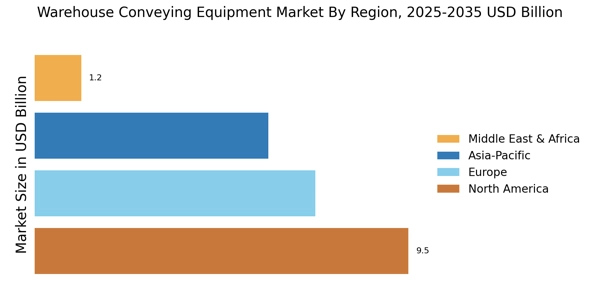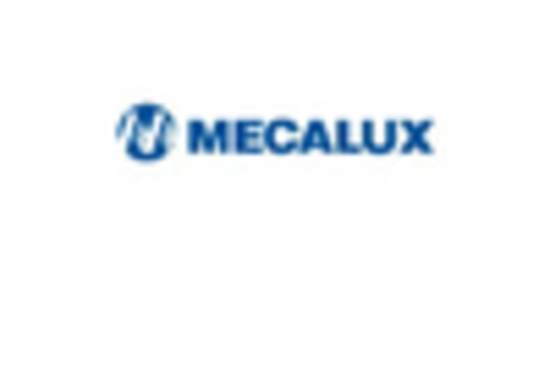The Warehouse Conveying Equipment Market is currently characterized by a dynamic competitive landscape, driven by technological advancements and increasing demand for automation in logistics and warehousing. Key players such as Dematic (US), Honeywell Intelligrated (US), and Daifuku (JP) are strategically positioning themselves through innovation and regional expansion. Dematic (US) focuses on integrating advanced robotics and AI into their systems, enhancing operational efficiency. Meanwhile, Honeywell Intelligrated (US) emphasizes digital transformation, leveraging data analytics to optimize supply chain processes. Daifuku (JP) is expanding its global footprint, particularly in Asia, to capitalize on the growing e-commerce sector. Collectively, these strategies are reshaping the competitive environment, fostering a landscape where technological prowess and operational agility are paramount.
In terms of business tactics, companies are increasingly localizing manufacturing to mitigate supply chain disruptions and enhance responsiveness to regional market demands. The Warehouse Conveying Equipment Market appears moderately fragmented, with several key players exerting influence while also facing competition from emerging firms. This structure allows for a diverse range of solutions, catering to various customer needs, while the collective actions of established players drive innovation and set industry standards.
In August 2025, Dematic (US) announced a partnership with a leading e-commerce retailer to develop a fully automated distribution center. This strategic move is significant as it not only showcases Dematic's commitment to automation but also positions the company as a key player in the rapidly evolving e-commerce logistics space. The collaboration is expected to enhance operational efficiency and reduce delivery times, thereby strengthening Dematic's market position.
In September 2025, Honeywell Intelligrated (US) launched a new AI-driven software platform designed to optimize warehouse operations. This initiative reflects the company's focus on digital transformation, enabling clients to leverage real-time data for improved decision-making. The introduction of this platform is likely to enhance Honeywell's competitive edge by providing customers with advanced tools to streamline their operations and reduce costs.
In July 2025, Daifuku (JP) expanded its manufacturing capabilities in Southeast Asia, aiming to meet the increasing demand for automated solutions in the region. This expansion is strategically important as it allows Daifuku to enhance its production capacity and respond more effectively to local market needs. By establishing a stronger presence in Asia, Daifuku is positioning itself to capture a larger share of the growing market for warehouse automation.
As of October 2025, the Warehouse Conveying Equipment Market is witnessing trends such as digitalization, sustainability, and AI integration, which are redefining competitive dynamics. Strategic alliances among key players are becoming increasingly common, facilitating knowledge sharing and resource optimization. Looking ahead, competitive differentiation is likely to evolve from traditional price-based competition to a focus on innovation, technological advancements, and supply chain reliability. Companies that can effectively leverage these trends will likely emerge as leaders in this rapidly changing market.


















Leave a Comment